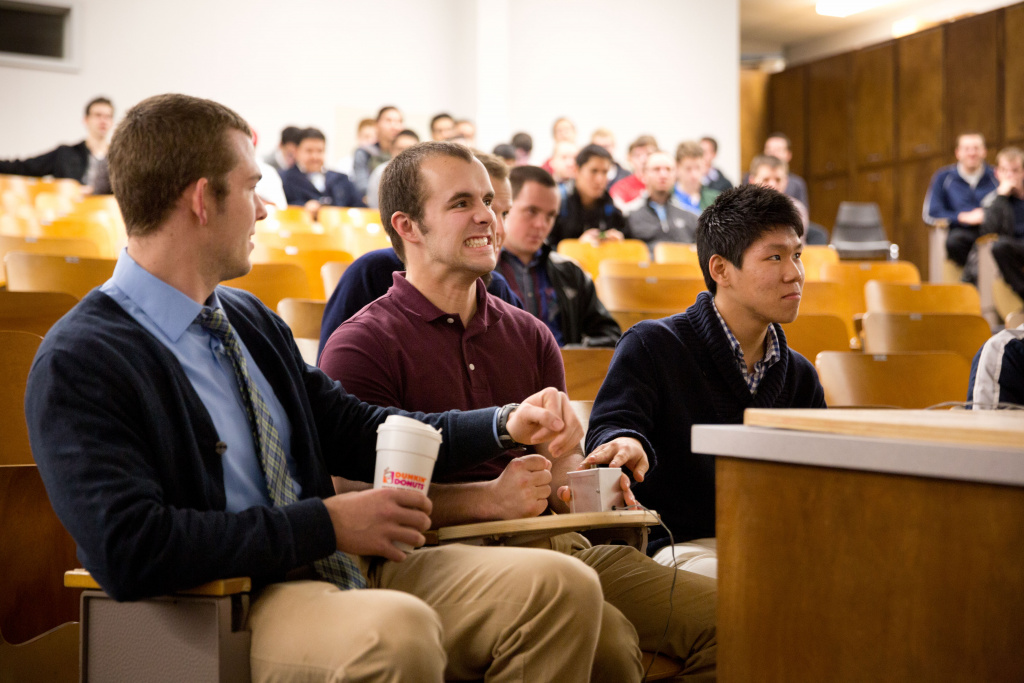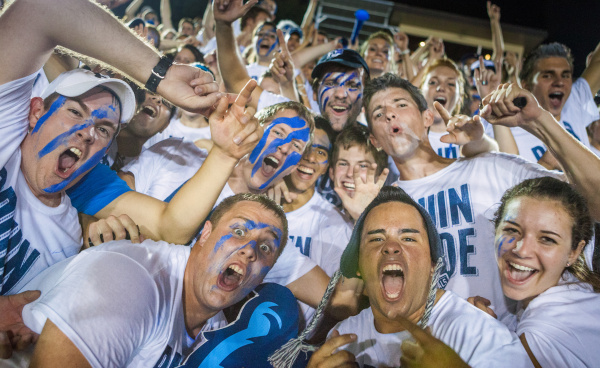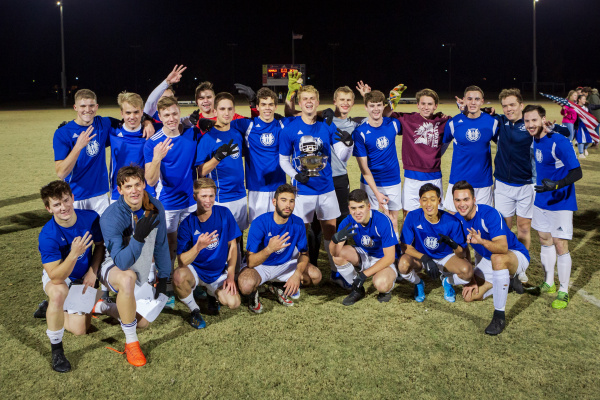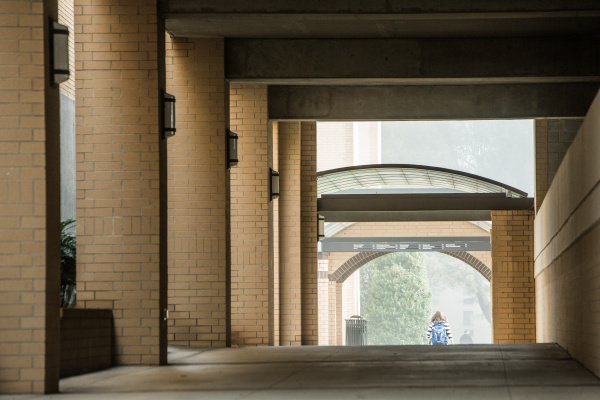Students compete in the 2013 Scholastic Bowl (Photo by Derek Eckenroth)
Scholastic Bowl — a quiz competition among societies — originated as a Commencement week event in 1985. The competition occupied students while teachers took three days to hand-grade exams. “Idle hands are the devil’s workshop,” said Dr. John Matzko of the history faculty, “so the University needed required-attendance programs to fill that space, which included scheduling a number of performance contests … a Commencement concert, and a final play.”
The game was contrived to replace the intersociety debate championship held during that week. “The final debates at Commencement were getting arcane and squirrelly and weren’t as interesting to students or visitors as they had been in earlier years,” said Matzko. “To be frank, they were deadly dull. Also, some faculty members complained that debate just taught students how cleverly one could make black appear white and vice versa.”
In the summer of 1984, University president Dr. Bob Jones III wrote a letter to faculty member Dr. Jim Berg, outlining the basic needs and rules of the competition:
- Ten questions from 10 faculty members of different academic fields that varied in difficulty and reflected both class content and general interest.
- Master of ceremonies to quickly read the questions.
- A scorekeeper and timekeeper, who also judged debatable answers.
- A buzzer board that blocked subsequent attempts to answer.
- A 10-second limit for answering questions.
- No discussion before one team member answered.
- Ten seconds for the opposing team to discuss and steal incorrectly answered questions.
- Four eight-minute rounds of questions with two minutes between rounds.
- A 90-second bonus round in which students got points for every correct answer to a listing question.
“I think some ideas came from similar games played at other colleges, even intercollegiate competitions, and there was a 12-year series on network TV called G.E. College Bowl from 1959–1970,” Matzko said. “But Scholastic Bowl also resembles Bible quizzes that were popular among Christian high schools in the 1970s and ’80s.”
Scholastic Bowl — Then and Now
Since Scholastic Bowl was first held in 1985, the essence of the game has remained the same with six rounds per year. However, changes have been made to the competition since it began.
“Early on there was trial-and-error involved in tweaking the rules,” Matzko said. “For instance, we quickly reduced the amount of time given to teams to answer the questions from 10 seconds to eight seconds and the interval between the three rounds was reduced from two minutes to one.”
Requirements for participating and attending Scholastic Bowl have also changed. Although teams have always had three members plus a couple of alternates, previously each society member had to participate. “Later on, it became somewhat more voluntary,” Matzko said.
Additionally, entire societies are no longer required to observe rounds. Instead, a minimal number of students observe the rounds, including the final round which was formerly a required event for all students.
Because of smaller crowds, the locations of the rounds have also changed. “Until a few years ago, the first three rounds were played during society meeting times in campus classrooms, the fourth in the Alumni Building in the evening, and the fifth and sixth in FMA,” Matzko explained. In particular, the fifth and sixth rounds are now held in Lecture B.
Choosing the Questions
To prepare for the first Scholastic Bowl, Dr. Guenter Salter, then Dean of the College of Arts & Science, had collected hundreds of questions from faculty members. He placed them in two large file boxes and gave those to Matzko. But that method of question collecting was short-lived.
“The quality and level of the questions was all over the map,” Matzko explained. “We retained the fiction that these were faculty-written questions, but as the years went on, I wrote more and more myself and tweaked the remainder.”
Matzko now has about 3,700 questions in the question bank. He prepares about 125 questions for each game, even though students usually do not answer more than 100. Topics vary, but he avoids questions about sports and popular culture.
His ultimate goal in choosing questions is that students be able to answer them. “I try to make it enjoyable for the students,” he said. “If it’s clear to me that no one knows the answer to a question, it will never get asked again. It’s more fun for me if every question gets answered by someone.”
Not only does Matzko try to pick answerable questions but he also aims to get reactions from the students. “I remember having a question in the final round before the whole student body in which the answer was ‘the square root of 2,’ and when a team member answered it correctly, there was a gasp from the audience,” he said. “My thought was, ‘I’ve got to work on getting more answers that get that kind of reaction.’ Ditto on answers that got laughter.”
To Matzko, the value of the Scholastic Bowl for students is its entertainment. He said, “You can’t really study for it, so it’s just for fun.”
Because men’s and women’s societies are meeting on separate days during the fall 2020 semester and fewer rooms are available, Scholastic Bowl is postponed until the spring.








